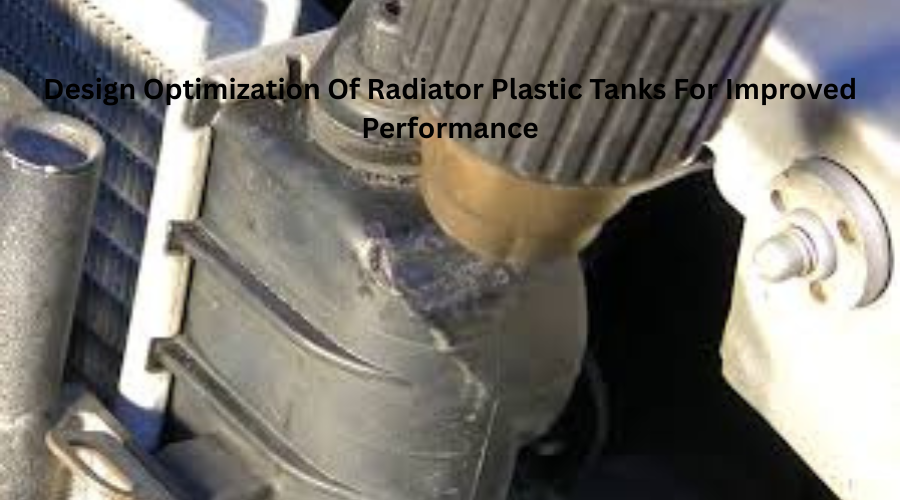What Type Of Material Is Generally Used In a Radiator?
- linghangtechnology
- Feb 27
- 4 min read

When it comes to vehicle performance and engine cooling, the radiator plays a crucial role. It helps control the engine heat by dissipating heat, preventing overheating, and ensuring smooth operation. An auto radiator plastic tank manufacturer plays a key role in producing high-quality plastic tanks used in composite radiators, ensuring efficient cooling performance. But have you ever wondered what materials are used to manufacture radiators? The choice of material is vital as it directly impacts heat dissipation efficiency, durability, and cost. In this guide, we’ll explore the most commonly used radiator materials and their advantages and disadvantages.
Commonly Used Materials in Radiators
1. Aluminum Radiators
Aluminum is one of the most widely used materials in modern radiator manufacturing. This lightweight metal offers several advantages:
High Thermal Conductivity: Aluminum efficiently transfers heat, ensuring the engine remains cool.
Lightweight: Compared to other materials, aluminum radiators are significantly lighter, improving vehicle fuel efficiency.
Corrosion Resistance: Aluminum naturally forms an oxide layer, which helps prevent rust and extends the radiator’s lifespan.
Cost-Effective Production: Aluminum radiators are easier and cheaper to mass-produce.
However, aluminum radiators may not be as durable as copper-brass models and can be prone to damage under extreme conditions.
2. Copper-Brass Radiators
Copper-brass radiators were the industry standard before aluminum became popular. They are still used in some applications today due to their excellent heat dissipation properties.
Superior Thermal Efficiency: Copper and brass conduct heat better than aluminum, making these radiators more efficient at cooling.
Durability: These radiators are more resistant to damage, especially in heavy-duty applications like trucks and industrial vehicles.
Easier to Repair: Unlike aluminum radiators, which often require full replacement when damaged, copper-brass radiators can be repaired by soldering.
On the downside, copper-brass radiators are heavier and more expensive to manufacture, leading to their decline in mainstream automotive use.

3. Plastic and Aluminum Composite Radiators
Many modern vehicles use a combination of plastic and aluminum to construct radiators. These designs typically feature aluminum cores with plastic tanks, providing a balance between cost and efficiency.
Lightweight and Affordable: The plastic components reduce weight and production costs.
Decent Corrosion Resistance: Plastic does not corrode, and aluminum is resistant to rust.
Widespread Use in Modern Cars: Most mass-produced vehicles today use this type of radiator due to its balance of performance and affordability.
However, plastic tanks may degrade over time owing to continuous exposure to heat and pressure, leading to cracks and leaks.
4. Stainless Steel Radiators
Stainless steel is less commonly used in radiators but is occasionally found in specialized applications, such as racing or marine vehicles.
High Durability: Stainless steel resists rust and can withstand harsh conditions.
Heavyweight: This material is much heavier than aluminum or plastic, making it less suitable for everyday vehicles.
Lower Thermal Conductivity: It does not transfer heat as efficiently as aluminum or copper-brass radiators.
Due to these factors, stainless steel radiators are not commonly used in standard automotive applications.
5. Cast Iron Radiators (Historical Use)
In the early days of automotive and industrial machinery, cast iron was a common material for radiators.
Extremely Durable: Cast iron radiators can withstand high pressure and last for decades.
Excellent Heat Retention: Once heated, cast iron retains warmth for long periods.
However, these radiators were too heavy and inefficient compared to modern alternatives, leading to their discontinuation in vehicle production.
Factors to Consider When Choosing a Radiator Material
1. Heat Dissipation Efficiency
The primary function of a radiator is to dissipate heat effectively. Metal alloys like copper and aluminum excel in this regard, with aluminum being the more modern choice due to its lightweight nature.
2. Durability and Longevity
Durability is crucial, especially for vehicles exposed to extreme temperatures and harsh conditions. Copper-brass and stainless steel radiators offer excellent durability, while plastic components may degrade over time.
3. Weight Considerations
Lightweight radiators contribute to better fuel efficiency. Aluminum and plastic-aluminum composite radiators are the best choices for reducing overall vehicle weight.
4. Cost and Maintenance
Budget and servicing demand also play a role in choosing a radiator material. Plastic-aluminum radiators are affordable but may need more frequent replacements, while copper-brass radiators have higher upfront costs but can be repaired easily.
FAQs
1. What is the best material for a high-performance radiator?
Aluminum is the preferred material for high-performance radiators due to its low-weight nature and excellent heat dissipation properties.
2. Why are modern radiators made of aluminum instead of copper?
While copper has superior thermal conductivity, aluminum is lighter, more cost-effective, and easier to manufacture, making it the material of choice for most modern radiators.
3. Are plastic radiators durable?
Plastic-aluminum radiators are durable for everyday use, but plastic components can degrade over time, leading to potential leaks.
4. Can a radiator be repaired, or does it need replacement?
It depends on the material. Copper-brass radiators can often be repaired, while plastic-aluminum radiators usually require full replacement when damaged.
5. What role does the radiator manufacturer play?
A Radiator manufacturer produces durable plastic tanks that are used in composite radiators. These tanks ensure leak-proof performance and cost-effective cooling solutions in modern vehicles.
Conclusion
The choice of radiator material depends on several factors, including heat dissipation, durability, weight, and cost. Aluminum is the most commonly used material today due to its excellent performance-to-cost ratio. However, copper-brass radiators remain popular for heavy-duty applications, while plastic-aluminum radiators provide an affordable option for standard vehicles. Understanding these materials helps ensure better vehicle maintenance and optimal cooling system performance.






Comments